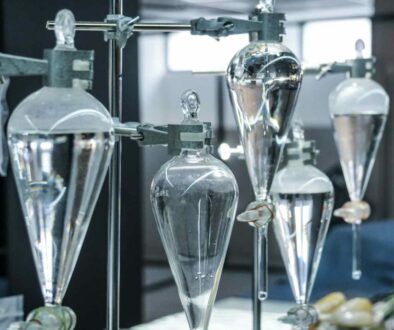Why Choose Ethanol for Botanical Extractions?
Botanical plants—long utilized for its medicinal and healing properties as well as for psychoactive and even spiritual purposes—is experiencing a rebirth in a big way. Around the globe, botanical plant users young and old are embracing this incredible plant, which has the capacity to prevent and even cure disease, correct neural and physical imbalances, and mitigate psychological disorders, including depression, anxiety, and schizophrenia. Long hailed as an effective cancer treatment and appetite stimulant, plant extractions are used the world over as a natural alternative to synthetic pharmaceuticals.
In recent years, extractions have taken center stage, alongside the advent of modern e-technologies. Botanical plant extracts, which preserve valuable compounds in plant matter, make use of solvents to create potent, stable extractions. Traditionally, butane has been used to create plant extractions, and supercritical C02 extraction represents a recent innovation in the realm of plant extractions.
Yet ethanol, a source for so many of today’s high-quality botanical extractions, is gaining traction as one of the most effective solvents on the market today.
Typical Botanical Extraction Methods
For so long, extractions were created with butane, which boils at a lower point than other common solvents, including alcohol. Because of butane’s non-polarity, extractions containing specific compounds and terpenes are easier to produce, since specific compounds may be drawn from the plant matter without co-extracting chlorophyll and other “undesirables.” Yet butane is also famously flammable – think lighter fluid – and many explosions have occurred as a result of DIY butane extractions gone wrong.
Supercritical CO2 extraction, then, is perhaps more appealing than butane extraction simply because of its relative safety. With a minimal environmental footprint, many favor supercritical CO2 extraction. But the process is lengthy, and supercritical CO2 extraction is still on the rise to being praised for its efficiency.
Why Ethanol Extraction is the Logical Choice
Ethanol is the logical favorite. It’s effective, efficient, and safe—and that’s according to the FDA. Commonly used as an additive in everything from wine to whipped cream, ethanol is reliable, consistently producing potent extractions with minimal fuss.
Naturally, ethanol extraction comes with its downfalls—but the industry is working fast to address those drawbacks. Because ethanol is a polar solvent (unlike butane), it readily mixes with water, breaking down water-soluble molecules, like chlorophyll. Unfortunately, chlorophyll is also one of those “undesirables,” and ethanol extraction can make it difficult to pull the grassy-tasting compounds from the end product. A green, grassy extraction is unappealing to dabbers—those looking for a concentrated “hit” of a clean, pure extraction.
Fortunately, new innovations in chlorophyll detection and extraction mean that bitter, grassy extractions are becoming a thing of the past, and sooner than you might think. Multiple ethanol extractions, for example, can mitigate the presence of chlorophyll and other undesirables.
CO2 extractors typically come in fixed sizes, and capital costs are quite expensive. A 20liter extractor is among the most common, taking 8 pounds of plant material and allowing you to turn it into 400g of pure oil, usable for vaping or edibles. With ethanol extraction systems, we can customize to the exact weight or volume you want to make, allowing you to do small 1lb batches, to very large, 50lb or more extractions. These sanitary ethanol reactors come built with 316L stainless steel, recirculation system, plant material holders, and can have chilling jackets for dry ice or nitrogen supercold chilling.
High quality, effective extractions empower their users to feel healthier, stronger, and better nourished. The data is in, and it’s overwhelming: plant extraction and its incredible capabilities continue to exceed even our wildest expectations.

